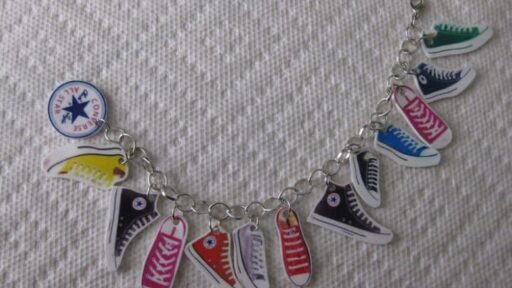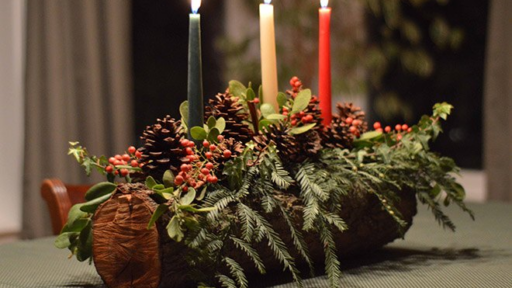Planning a garden wedding in 2026 means blending natural beauty with thoughtful design choices that reflect personal style. Couples are embracing outdoor settings not just for the scenery but for the chance to create a celebration that feels relaxed, elegant, and connected to nature. The key to a successful garden wedding lies in balancing décor that complements the landscape with outfits that suit both the setting and the season.
Trends for 2026 point toward bold colors, sculptural floral arrangements, and immersive guest experiences. A garden backdrop allows these ideas to shine without overwhelming the space. From layered textures in table settings to creative floral art that feels more like sculpture than decoration, couples can shape an atmosphere that feels fresh yet timeless.
Outfits also play a major role in tying the theme together. Lightweight fabrics, floral details, and coordinated styles for the wedding party reflect the outdoor setting while keeping comfort in mind. Together, these choices create a cohesive look and feel, setting the stage for a wedding that feels both modern and rooted in the beauty of nature.
Key Steps for Planning a Garden Wedding in 2026
A garden wedding in 2026 requires thoughtful decisions about the setting, timing, layout, and design. Couples should focus on practical details like weather, guest comfort, and seasonal flowers while also weaving in personal style through decor, attire, and meaningful touches.
Choosing the Perfect Garden Venue
The venue sets the tone for the entire wedding. Couples should decide if they want a formal garden with manicured lawns or a more natural space with wildflowers and trees. Each type creates a different atmosphere, so the choice depends on the couple’s vision.
Accessibility matters as well. Guests should have clear paths, comfortable seating, and shaded areas if the event takes place outdoors all day. It also helps to confirm restroom availability and parking options.
A backup plan is equally important. Tents or indoor access protect against sudden rain or heat. Venues that allow both ceremony and reception in one location reduce travel stress and keep the celebration seamless.
Setting the Date and Considering the Season
Timing directly affects the look and comfort of a garden wedding. Spring offers fresh blooms and mild weather, while summer provides longer daylight hours and lush greenery. Fall brings rich colors, though cooler evenings may require heaters or blankets.
Couples should research what flowers bloom in their chosen season. This helps guide decor choices and keeps costs lower since local, seasonal flowers are often more affordable.
The season also influences attire. Lighter fabrics suit warmer months, while autumn weddings may call for layered styles. Brides searching for elegant options can explore wedding dresses at JJ’s House, which feature designs that work across different climates and garden settings.
Designing the Ceremony and Reception Layout
The layout should balance beauty with function. Aisles lined with petals or greenery create a natural path, while arches or floral installations frame the ceremony space. Seating should give every guest a clear view without crowding the area.
For the reception, couples often prefer long banquet-style tables that feel intimate in an outdoor setting. Lighting also plays a role—string lights, lanterns, or candles add warmth once the sun sets.
Families may want to coordinate attire as well. Options for mother of the bride dresses now include lightweight fabrics and soft colors that complement the garden backdrop without overshadowing the bridal party.
Incorporating Nature-Inspired Decor Trends
Decor in 2026 highlights sustainability and personal expression. Many couples choose local flowers, reusable arrangements, or potted plants that guests can take home. Wildflower bouquets and meadow-style centerpieces remain popular for their natural look.
Color palettes lean toward soft neutrals with accents of terracotta, sage, or lavender. These shades blend well with outdoor scenery and avoid clashing with the greenery.
Couples also use eco-friendly touches such as seed packet favors, recycled paper invitations, and minimal plastic use. This approach not only reduces waste but also creates a wedding that feels thoughtful and connected to nature.
Curating Decor and Outfits for a Garden Wedding
A garden wedding blends natural scenery with thoughtful design choices. Flowers, lighting, and attire all work together to create a setting that feels cohesive, comfortable, and memorable for both the couple and their guests.
Selecting Floral Arrangements and Greenery
Fresh flowers and greenery define the look of any outdoor ceremony. Seasonal blooms often work best because they appear natural in the setting and hold up better in outdoor conditions. Roses, peonies, and dahlias bring vibrant color, while eucalyptus and ferns add soft texture.
Many couples choose floral arches or aisle arrangements to frame the ceremony space. Potted plants can double as décor and guest favors, giving attendees a lasting reminder of the day. Dense bouquets with layered textures create a striking visual without overwhelming the natural backdrop.
It helps to balance bold flowers with greenery so the space feels full yet not cluttered. Repeating colors across centerpieces, bouquets, and ceremony structures ties the design together.
Lighting and Ambiance for Outdoor Settings
As daylight changes, lighting makes a major difference in how the event feels. String lights across dining areas create a warm glow, while lanterns or candles on tables add intimacy. For evening receptions, uplighting on trees or garden features highlights the natural setting.
Practical lighting matters as well. Pathways should remain visible for safety, especially in dim areas. Solar-powered lights or subtle ground lanterns work well without drawing attention away from the décor.
Couples often combine functional and decorative light sources. For example, a canopy of fairy lights above the dance floor provides both atmosphere and visibility. This balance keeps the celebration inviting well into the night.
Bridal and Groom Attire for Garden Weddings
Outdoor ceremonies call for attire that looks polished but feels comfortable in natural settings. Brides often choose lightweight fabrics like chiffon, lace, or tulle since they move easily and breathe well. Floral embroidery or veils with delicate stitching reflect the garden theme without feeling overdone.
Grooms usually favor lighter suits in shades like beige, gray, or soft blue. Linen and cotton blends work well in warmer months, while wool suits fit cooler evenings. Small details such as floral boutonnieres or patterned ties connect the outfit to the décor.
Accessories should stay simple so they complement rather than compete with the natural surroundings. Shoes with stable soles are practical for grass or stone pathways.
Guest and Wedding Party Outfit Ideas
Guests should dress with both style and comfort in mind. Light fabrics and breathable materials keep outfits practical for outdoor weather. Dresses, skirts, and dress shirts in floral prints or pastel tones fit naturally with the setting.
For the wedding party, coordinated looks help unify the theme. Bridesmaids often wear floral prints or soft, solid colors that complement the bride’s gown. A wide selection of bridesmaid dresses makes it easier to find options that suit different body types while still maintaining a cohesive look.
Groomsmen usually match the groom’s suit but may wear lighter ties or pocket squares to reflect the season. Comfortable footwear is also important since the ceremony and reception often take place on grass or uneven ground.
Conclusion
A garden wedding in 2026 balances natural beauty with thoughtful style choices. Couples can highlight seasonal flowers, simple yet elegant décor, and attire that suits the outdoor setting. Small details, such as color palettes and textures, help tie everything together.
Trends point toward bold colors, sculptural floral designs, and personal touches that reflect the couple’s story. Outfits lean toward comfort without losing sophistication, while décor often blends modern elements with the landscape itself.
By combining design trends with practical planning, couples create a celebration that feels timeless yet current. The result is a wedding that reflects both the setting and the couple’s own sense of style.








